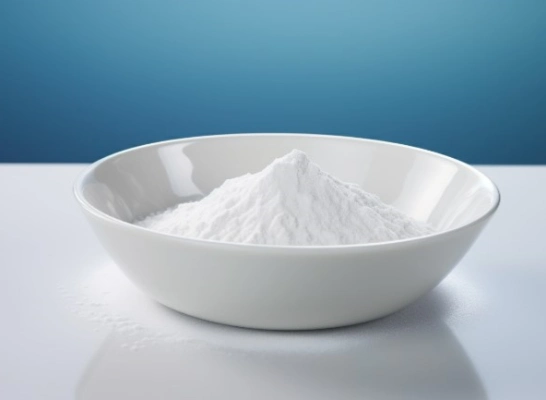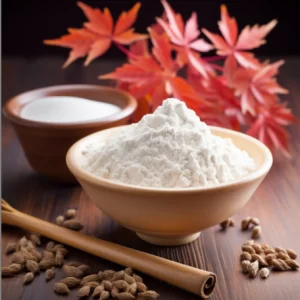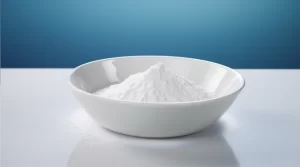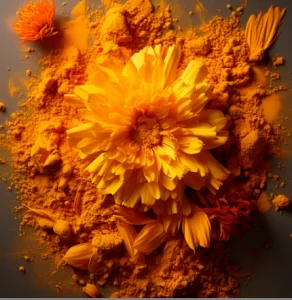에르고티오네인, 항산화제

Ergothioneine: a powerful 노화 방지 agent found in nature
In the dietary supplement industry, countless brands have launched single-ingredient products with superposition, bioavailability and purity. However, these products often do not live up to their claimed efficacy or are not supported by scientific testing. The same is true for the antioxidants on the market today, many of which claim to support the immune system. Ergothioneine is one of the oldest biologically active ingredients. Ergothione is not produced in the body, it must be obtained through the diet. Science has never been conclusive, but the leading hypothesis regarding the origin of ergothionein (EGT) is that it actually predates oxidation in the Earth’s atmosphere, which, if true, would put its age at about 2.4 billion years. This would undoubtedly make ergothioneine (EGT) one of the oldest bioactive compounds known to science.
Biosynthesis of ergothionein and its anti-aging mechanism
Given this, it’s not surprising that human cells have shown a high affinity for ergothioneine (ET) – it’s been with them basically throughout human evolution. It should come as no surprise that ergothioneine (EGT) plays an important supporting role in many aspects of human health.
Ergothioneine (ET) is a naturally occurring antioxidant found in a variety of uncommon foods, especially edible mushrooms. [6,7] A large number of convincing studies have shown that ergothioneine (EGT) can provide profound protection against oxidative stress, improve immune and inflammatory function, and protect cells from many different types of cytotoxins, especially in the skin, and of course, the benefits to skin health are actually just the tip of the iceberg when it comes to MitoPrime applications. The presence of an evolutionarily conserved ergothione specific cell transporter speaks volumes about the importance of this molecule to human longevity.
On March 6th, 2024, Professor Yukio Kato of Kanazawa University’s School of Pharmacy in Japan wrote an article titled “Ergothioneine promotes longevity and healthy aging in male mice” in the journal GeroScience. The study found that ergothioneine supplementation extended the lifespan of mice and promoted healthy aging. Studies have shown that the median and mean survival age of mice fed ergothioneine at a dose of 4-5 mg/kg body weight per day increased by 16% and 21%, respectively. In addition, the study found that treatment with 10 mM concentration of ergothione significantly extended the lifespan of C. elegans and improved the non-aging period. The conclusions of the paper suggest that ergothioneine intake can inhibit the aging process in several organs, including the kidney, liver and brain, and improve age-related learning and memory impairment. Of particular note, ergothioneine intake also led to significant age-related declines in body weight, fat mass, and average and maximum exercise speed. The 2016 study was published in “Ergothionein Levels Decrease with Age and Incidence of Cognitive Decline in the Elderly Population,” and the 2020 study includes two, “Ergothionein Reduces mortality and cardiovascular disease risk,” and “Ergothionein is the” longevity vitamin “in the American Diet,” published in the Journal of Nutritional Sciences. The 2022 study was published in the Journal of Food Function, titled “Ergothioneine shows life-prolonging effects in Drosophilia by regulating cholinergic neurotransmission, tyrosine metabolism, and fatty acid oxidation.” The joint findings of this series of papers demonstrate that ergothioneine works through a super-antioxidant at the mitochondrial level of the cell.
According to a 2020 article published in the Journal of Nutritional Sciences, the United States, a country with a high incidence of neurological diseases, has a lower intake of ergothioneine (EGT) compared to countries with similar levels of economic development. For example, Italians consume about 4.6 mg of ergothioneine (EGT) per day from food, while Americans consume only 1.1 mg. [10] Among the countries examined in this study, ergothioneine (EGT) intakes were highest in Italy and lowest in the United States, so 1.1 to 4.6 mg is a reasonable range for appropriate EGT intakes. In general, MitoPrime is taken at least 5 mg per day, however, since it is accumulated and, like creatine and beta-alanine, has a loading period, more “loading” doses can be strategically utilized to enhance the effect (e.g. 15-25 mg per day), especially if supplementation is needed immediately. A supplement strategy of 25 mg per day can be used.
Full effect anti-inflammatory
For obvious reasons, immune function has been a hot topic in recent years. Since both acute and chronic infections can seriously reduce quality of life and prevent you from reaching your full life potential, supporting immune function is one of the key goals of nutritional supplementation. Fortunately for us, numerous in vitro and animal studies have shown that ergothioneine (EGT) has powerful anti-inflammatory effects that can help your body cope with infectious diseases. For example, one study conducted on muscle cells found that ergothioneine (EGT) significantly reduced the inflammatory response of muscle cells to the fatty acid palmitic acid. [17] Cells pretreated with ergothioneine (ET) before exposure to palmitic acid had a much higher survival rate and produced much less of the inflammatory cytokine interleukin-6 (IL-6) compared to control cells. [17] Of course, this is only in cell cultures-so what about the results in animal experiments? In one study, researchers randomly assigned mice to receive either ergothioneine (EGT) or a placebo for 15 days. At the end of the treatment period, they induced ischemia in the rats to see how ergothionein (EGT) affected tissue damage caused by inadequate blood supply. [18] In the hours after ischemia, they measured the levels of inflammatory molecules, such as cytokines, in the rats’ blood and tissues. They also conducted histological studies of intestinal tissue from the rats. [18] The researchers found that the rats treated with EGT showed significantly fewer signs of inflammation than the control group, and that their intestinal tissue recovered better from ischemia. Summarizing these findings, we can say that the intestinal tissue structure of the ergothioneine (ET) group was better preserved than that of the control group. [18] The anaerobic (literally no oxygen) origin of ergothioneine (EGT) can help us understand this result – after all, cutting off the blood supply (ischemia) causes damage primarily by depriving cells of oxygen. Since ergothioneine (EGT) initially appears to help organisms cope with cellular stress in an oxygen-free environment, it is logical that it could help mitigate the damage caused by cellular hypoxia. In another study, the researchers induced an experimental model of ARDS, an inflammatory disease of lung tissue. ARDS is a hot topic today because it is often triggered by a cytokine storm of uncontrolled lung inflammation, which is often associated with severe SARS-CoV-2 infections. [19] Rats treated with ergothioneine showed significantly lower cytokine activity and lung tissue damage after ARDS. [19] Myeloperoxidase (MPO) is an enzyme that is largely responsible for tissue damage caused by inflammation. The ability of ergothioneine (EGT) to inhibit MPO is an important factor in its anti-inflammatory activity. [7]MPO is also associated with the function of neutrophils (a type of white blood cell), which is why high neutrophil counts are strongly associated with adverse consequences of SARS-CoV-2 infection. [20,21] Neutrophils produce a large number of inflammatory free radicals and reactive oxygen species (ROS) in the process of immune function.
Neutrophils are also necessary for immunity, so we don’t want to get rid of them, but we do need some way to clean up the reactive oxygen species they produce to prevent oxidative damage to the surrounding tissues. It turns out that’s exactly how ergothioneine (EGT) works. It has been shown to mop up free radicals produced by MPO-containing neutrophils, and ergothione is even better at scavenging free radicals than powerful antioxidants such as glutathione and vitamin C. [7] This is one of the main mechanisms by which ergothioneine (EGT) is able to prevent the cytokine storm common in severe SARS-CoV-2.
Can improve cardiometabolic, keep the heart healthy and long life
The inhibitory effect of ergothioneine (EGT) on MPO myeloperoxidase is an important point for its cardiovascular benefits. This is because MPO inhibitors have antithrombotic and anticoagulant effects. When bound to neutrophils, MPO plays a crucial role in the formation of the extracellular matrix around neutrophils. These fibrin-containing stroma are called neutrophil extracellular traps, or NETS, and can wreak havoc on the cardiovascular system by binding to red blood cells. Because of this binding effect of NET, MPO activity can form clots (blood clots). Aiaa [15]
Promotes the growth and repair of neurons
Our study of the ergothionein (EGT) transporter discussed at the beginning of this article, known as OCTN1, found that it plays a key role in helping neurons grow and differentiate, [35] which is a key component of healing after brain injury. A 2021 mouse study concluded that ergothioneine (EGT) supplements actually upregulate neurogenesis, significantly improving rodents’ performance on memory tests. [36]
Serum ergothioneine (ET) and the risk of neurological diseases
As we have seen in cardiovascular disease, serum EGT levels appear to be inversely associated with the risk of neurological disease – lower levels of EGT have been found in patients with Parkinson’s disease [25] and mild cognitive impairment. [26] Research suggests that ergothioneine (ET) may be critical for nervous system health – lower levels of ET have been observed in patients with severe and mild cognitive impairment. [25 to 28]
Effect on skin care
The body stores ergothionein not only in the liver, kidneys, eyes, and bone marrow, but also in the skin! [37,38] In fact, there is an entire 2009 journal article entitled “Skin Cells and Tissues are able to use L-ergothionein as a component of their antioxidant defense system” that explains the incredible potential of ergothionein (EGT) for skin protection and repair. [38] In fact, the aforementioned OCTN1 ergothione transporter is highly expressed in the human epidermis [38] and is used to fight reactive oxygen species, prevent lipid damage in skin cells, and protect DNA, especially when exposed to UV light and oxidative stress. [41] 38 –
UV damage caused by UV can be avoided
One study even concluded that only nanomolar amounts provide the following benefits:
“Ergothioneine at nanomolar concentrations is effective in improving skin damage caused by UVA and can be considered an ideal food supplement for skin protection and/or preparation of skin care products.” [41] In in vitro studies, ergothioneine began to accumulate in as little as one day, and in just nine days, ergothioneine (ET) levels increased by 600%! [42] The researchers of this study concluded: “In summary, we provide evidence that skin cells and tissues can absorb, accumulate, and utilize the powerful antioxidant L-ergothionein.” This naturally occurring amino acid site EGT and its receptor/transporter have been reported to have multiple protective effects as components of the skin’s antioxidant defense system.” [38]
Mechanism: Better perception of skin damage and activation of protective effects
To make a long story short, ergothioneine (EGT) can activate Nrf2, a leucine zipper protein that plays an important regulatory role in cells, specifically involved in antioxidant stress and cellular defense mechanisms, resulting in a protective effect. This produces multiple effects (especially in UVA-irradiated cells) and helps protect collagen and extracellular matrix from degradation by increasing cell viability. [40]
Protects hyaluronic acid from degradation
Many of us who study skin and joint care protocols know about hyaluronic acid, a molecule found in soft tissues that helps cells retain water and stay hydrated. A recent study from 2021 showed that ergothionein can actually protect hyaluronic acid from degradation. [43] This is very useful for general skin care, and we believe MitoPrime® can be even more effective. Ergothione protects hyaluronic acid, which has an interesting ripple effect – it leads to better overall wound healing! [43] Usually we don’t think about using supplements to speed up wound healing, but it’s something worth knowing and keeping in mind.
백비타
참조:
Halliwell, Barry; “The antioxidant paradox”; The Lancet; 355(9210):1179-80; April 1, 2000; https://www.ncbi.nlm.nih.gov/pubmed/10791396/
Halliwell, Barry; “The antioxidant paradox: less paradoxical now?” British journal of clinical pharmacology; vol. 75,3: 637-44; 2013; https://www.ncbi.nlm.nih.gov/pmc/articles/PMC3575931/
Rehman, A, et al; “The effects of iron and vitamin C co-supplementation on oxidative damage to DNA in healthy volunteers”; Biochemical and Biophysical Research Communications; 246(1):293-8; May 8, 1998; https://www.ncbi.nlm.nih.gov/pubmed/9600109
Podmore, Ian D, et al; “Vitamin C exhibits pro-oxidant properties”; Nature; 392, page 559; 1998; https://www.nature.com/articles/33308
Ramirez-Martinez, Alejandra, et al. “Intake Assessment of L-Ergothioneine in Some European Countries and in the United States.” Human and Ecological Risk Assessment: An International Journal, vol. 22, no. 3, 23 Oct. 2015, pp. 667–677, 10.1080/10807039.2015.1104241; https://www.tandfonline.com/doi/full/10.1080/10807039.2015.1104241
Asahi, Takashi et al. “A mushroom-derived amino acid, ergothioneine, is a potential inhibitor of inflammation-related DNA halogenation.” Bioscience, biotechnology, and biochemistry vol. 80,2 (2016): 313-7. doi:10.1080/09168451.2015.1083396; https://academic.oup.com/bbb/article/80/2/313/5939193
Stoffels, Christopher, et al; “Ergothioneine stands out from hercynine in the reaction with singlet oxygen: Resistance to glutathione and TRIS in the generation of specific products indicates high reactivity”; Free Radical Biology and Medicine; Volume 113, Pages 385-394; December 2017; https://www.sciencedirect.com/science/article/abs/pii/S0891584917311553
Julia Tschirka, Madlen Kreisor, Janina Betz and Dirk Gründemann; “Substrate Selectivity Check of the Ergothioneine Transporter”; Drug Metabolism and Disposition; 46(6):779-785; June 2018; https://dmd.aspetjournals.org/content/46/6/779.long
Beelman, Robert B et al. “Is ergothioneine a ‘longevity vitamin’ limited in the American diet?.” Journal of nutritional science vol. 9 e52. 11 Nov. 2020, doi:10.1017/jns.2020.44; https://www.ncbi.nlm.nih.gov/pmc/articles/PMC7681161/
Ames, Bruce N. “Prolonging healthy aging: Longevity vitamins and proteins.” Proceedings of the National Academy of Sciences of the United States of America vol. 115,43 (2018): 10836-10844. doi:10.1073/pnas.1809045115; https://www.ncbi.nlm.nih.gov/pmc/articles/PMC6205492/
Paul, B D, and S H Snyder. “The Unusual Amino Acid L-Ergothioneine Is a Physiologic Cytoprotectant.” Cell Death & Differentiation, vol. 17, no. 7, 13 Nov. 2009, pp. 1134–1140, doi:10.1038/cdd.2009.163; https://www.ncbi.nlm.nih.gov/pmc/articles/PMC2885499/
University of Basel; “The vitamin ergothioneine—an antioxidant for oxygen-free areas?”; October 4, 2017; https://phys.org/news/2017-10-vitamin-ergothioneinean-antioxidant-oxygen-free-areas.html
Gründemann, Dirk et al. “Discovery of the ergothioneine transporter.” Proceedings of the National Academy of Sciences of the United States of America vol. 102,14 (2005): 5256-61. doi:10.1073/pnas.0408624102; https://www.ncbi.nlm.nih.gov/pmc/articles/pmid/15795384/
Cheah, Irwin K, and Barry Halliwell. “Could Ergothioneine Aid in the Treatment of Coronavirus Patients?.” Antioxidants (Basel, Switzerland) vol. 9,7 595. 7 Jul. 2020, doi:10.3390/antiox9070595; https://www.ncbi.nlm.nih.gov/pmc/articles/PMC7402156/
Cheah, Irwin K et al. “Administration of Pure Ergothioneine to Healthy Human Subjects: Uptake, Metabolism, and Effects on Biomarkers of Oxidative Damage and Inflammation.” Antioxidants & redox signaling vol. 26,5 (2017): 193-206. doi:10.1089/ars.2016.6778; https://www.liebertpub.com/doi/10.1089/ars.2016.6778
Laurenza, Incoronata et al. “Modulation of palmitic acid-induced cell death by ergothioneine: evidence of an anti-inflammatory action.” BioFactors (Oxford, England) vol. 33,4 (2008): 237-47. doi:10.1002/biof.5520330401; https://iubmb.onlinelibrary.wiley.com/doi/abs/10.1002/biof.5520330401
Sakrak, Omer et al. “Ergothioneine modulates proinflammatory cytokines and heat shock protein 70 in mesenteric ischemia and reperfusion injury.” The Journal of surgical research vol. 144,1 (2008): 36-42. doi:10.1016/j.jss.2007.04.020; https://linkinghub.elsevier.com/retrieve/pii/S0022-4804(07)00277-6
Repine, John E, and Nancy D Elkins. “Effect of ergothioneine on acute lung injury and inflammation in cytokine insufflated rats.” Preventive medicine vol. 54 Suppl,Suppl (2012): S79-82. doi:10.1016/j.ypmed.2011.12.006; https://www.ncbi.nlm.nih.gov/pmc/articles/PMC3355229/
Wang, Dawei et al. “Clinical Characteristics of 138 Hospitalized Patients With 2019 Novel Coronavirus-Infected Pneumonia in Wuhan, China.” JAMA vol. 323,11 (2020): 1061-1069. doi:10.1001/jama.2020.1585; https://www.ncbi.nlm.nih.gov/pmc/articles/PMC7308057/
Zuo, Yu et al. “Neutrophil extracellular traps in COVID-19.” JCI insight vol. 5,11 e138999. 4 Jun. 2020, doi:10.1172/jci.insight.138999; https://www.ncbi.nlm.nih.gov/pmc/articles/PMC7308057/
Valachová, Katarína et al. “The importance of ergothioneine synthesis in ancient time by organisms living in oxygen free atmosphere.” Medical hypotheses vol. 123 (2019): 72-73. doi:10.1016/j.mehy.2018.12.015; https://linkinghub.elsevier.com/retrieve/pii/S0306-9877(18)31118-6
Ruszczycky, Mark W, and Hung-Wen Liu. “Biochemistry: The surprising history of an antioxidant.” Nature vol. 551,7678 (2017): 37-38. doi:10.1038/551037a; https://www.ncbi.nlm.nih.gov/pmc/articles/PMC5830134/
Fuchs, Tobias A et al. “Extracellular DNA traps promote thrombosis.” Proceedings of the National Academy of Sciences of the United States of America vol. 107,36 (2010): 15880-5. doi:10.1073/pnas.1005743107; https://www.ncbi.nlm.nih.gov/pmc/articles/PMC2936604/
Hatano, Taku et al. “Identification of novel biomarkers for Parkinson’s disease by metabolomic technologies.” Journal of neurology, neurosurgery, and psychiatry vol. 87,3 (2016): 295-301. doi:10.1136/jnnp-2014-309676; https://jnnp.bmj.com/content/87/3/295.long
Cheah, Irwin K et al. “Ergothioneine levels in an elderly population decrease with age and incidence of cognitive decline; a risk factor for neurodegeneration?.” Biochemical and biophysical research communications vol. 478,1 (2016): 162-167. doi:10.1016/j.bbrc.2016.07.074; https://linkinghub.elsevier.com/retrieve/pii/S0006-291X(16)31196-2
Wu, Liu-Yun, et al. “Low Plasma Ergothioneine Predicts Cognitive and Functional Decline in an Elderly Cohort Attending Memory Clinics.” Antioxidants, vol. 11, no. 9, 30 Aug. 2022, p. 1717, doi:10.3390/antiox11091717; https://www.ncbi.nlm.nih.gov/pmc/articles/PMC9495818/
Wu, Liu-Yun, et al. “Low Plasma Ergothioneine Levels Are Associated with Neurodegeneration and Cerebrovascular Disease in Dementia.” Free Radical Biology and Medicine, vol. 177, Dec. 2021, pp. 201–211, doi:10.1016/j.freeradbiomed.2021.10.019; https://pubmed.ncbi.nlm.nih.gov/34673145/
Smith, Einar et al. “Ergothioneine is associated with reduced mortality and decreased risk of cardiovascular disease.” Heart (British Cardiac Society) vol. 106,9 (2020): 691-697. doi:10.1136/heartjnl-2019-315485; https://www.ncbi.nlm.nih.gov/pmc/articles/pmid/31672783/
Ericson, Ulrika et al. “A Health-Conscious Food Pattern Is Associated with Prediabetes and Gut Microbiota in the Malmö Offspring Study.” The Journal of nutrition vol. 150,4 (2020): 861-872. doi:10.1093/jn/nxz293; https://www.ncbi.nlm.nih.gov/pmc/articles/PMC7138670/
Cobley, James Nathan et al. “13 reasons why the brain is susceptible to oxidative stress.” Redox biology vol. 15 (2018): 490-503. doi:10.1016/j.redox.2018.01.008; https://www.ncbi.nlm.nih.gov/pmc/articles/PMC5881419/
Yang, Nae-Cherng et al. “Ergothioneine protects against neuronal injury induced by β-amyloid in mice.” Food and chemical toxicology : an international journal published for the British Industrial Biological Research Association vol. 50,11 (2012): 3902-11. doi:10.1016/j.fct.2012.08.021; https://linkinghub.elsevier.com/retrieve/pii/S0278-6915(12)00585-6
Moncaster, Juliet A et al. “Ergothioneine treatment protects neurons against N-methyl-D-aspartate excitotoxicity in an in vivo rat retinal model.” Neuroscience letters vol. 328,1 (2002): 55-9. doi:10.1016/s0304-3940(02)00427-5; https://linkinghub.elsevier.com/retrieve/pii/S0304394002004275
Song, Tuzz-Ying et al. “Ergothioneine protects against neuronal injury induced by cisplatin both in vitro and in vivo.” Food and chemical toxicology : an international journal published for the British Industrial Biological Research Association vol. 48,12 (2010): 3492-9. doi:10.1016/j.fct.2010.09.030; https://linkinghub.elsevier.com/retrieve/pii/S0278-6915(10)00606-X
Ishimoto, Takahiro et al. “Organic cation transporter-mediated ergothioneine uptake in mouse neural progenitor cells suppresses proliferation and promotes differentiation into neurons.” PloS one vol. 9,2 e89434. 25 Feb. 2014, doi:10.1371/journal.pone.0089434; https://www.ncbi.nlm.nih.gov/pmc/articles/PMC3934899/
Nakamichi, Noritaka et al. “Oral Administration of the Food-Derived Hydrophilic Antioxidant Ergothioneine Enhances Object Recognition Memory in Mice.” Current molecular pharmacology vol. 14,2 (2021): 220-233. doi:10.2174/1874467213666200212102710; https://www.eurekaselect.com/179259/article
Cheah, Irwin K., and Barry Halliwell. “Ergothioneine; Antioxidant Potential, Physiological Function and Role in Disease.” Biochimica et Biophysica Acta (BBA) – Molecular Basis of Disease, vol. 1822, no. 5, 1 May 2012, pp. 784–793, doi:10.1016/j.bbadis.2011.09.017; https://www.sciencedirect.com/science/article/pii/S0925443911002201
Markova, Nelli G., et al. “Skin Cells and Tissue Are Capable of Using L-Ergothioneine as an Integral Component of Their Antioxidant Defense System.” Free Radical Biology & Medicine, vol. 46, no. 8, 15 Apr. 2009, pp. 1168–1176, 10.1016/j.freeradbiomed.2009.01.021; https://pubmed.ncbi.nlm.nih.gov/19439218/
Bazela, Karolina, et al. “L-Ergothioneine Protects Skin Cells against UV-Induced Damage—a Preliminary Study.” Cosmetics, vol. 1, no. 1, 20 Mar. 2014, pp. 51–60, 10.3390/cosmetics1010051; https://www.mdpi.com/2079-9284/1/1/51
Hseu, You-Cheng, et al. “The Antiaging Activity of Ergothioneine in UVA-Irradiated Human Dermal Fibroblasts via the Inhibition of the AP-1 Pathway and the Activation of Nrf2-Mediated Antioxidant Genes.” Oxidative Medicine and Cellular Longevity, vol. 2020, 12 Feb. 2020, pp. 1–13, 10.1155/2020/2576823; https://www.ncbi.nlm.nih.gov/pmc/articles/PMC7038158/
Hseu, You-Cheng, et al. “Dermato-Protective Properties of Ergothioneine through Induction of Nrf2/ARE-Mediated Antioxidant Genes in UVA-Irradiated Human Keratinocytes.” Free Radical Biology and Medicine, vol. 86, Sept. 2015, pp. 102–117, 10.1016/j.freeradbiomed.2015.05.026; https://pubmed.ncbi.nlm.nih.gov/26021820/
Schauss, Alexander G., et al. “The Effect of Ergothioneine on Clastogenic Potential and Mutagenic Activity.” International Journal of Toxicology, vol. 30, no. 4, 19 July 2011, pp. 405–409, 10.1177/1091581811405856; https://journals.sagepub.com/doi/full/10.1177/1091581811405856
Valachova, Katarina, et al. “Impact of Ergothioneine, Hercynine, and Histidine on Oxidative Degradation of Hyaluronan and Wound Healing.” Polymers, vol. 13, no. 1, 29 Dec. 2020, p. 95, 10.3390/polym13010095; https://www.ncbi.nlm.nih.gov/pmc/articles/PMC7795610/
Cheah, Irwin K, and Barry Halliwell. “Ergothioneine, recent developments.” Redox biology vol. 42 (2021): 101868. doi:10.1016/j.redox.2021.101868; https://www.ncbi.nlm.nih.gov/pmc/articles/PMC8113028/
Marone, Palma Ann et al. “A Safety Evaluation of a Nature-Identical l-Ergothioneine in Sprague Dawley Rats.” International journal of toxicology vol. 35,5 (2016): 568-83. doi:10.1177/1091581816653375; https://journals.sagepub.com/doi/10.1177/1091581816653375
Turck, Dominique, et al. “Safety of Synthetic L‐Ergothioneine (Ergoneine®) as a Novel Food pursuant to Regulation (EC) No 258/97.” EFSA Journal, vol. 14, no. 11, Nov. 2016, 10.2903/j.efsa.2016.4629; https://efsa.onlinelibrary.wiley.com/doi/full/10.2903/j.efsa.2016.4629
Blue California; “GRAS Notification of Ergothioneine Food Usage Conditions for General Recognition of Safety.” FDA.gov, 2017, http://www.fda.gov/files/food/published/GRAS-Notice-000734–Ergothionine.pdf (archive)
Adams, Michael A, Keefe, Dennis M (FDA); “Agency Response Letter Re: GRAS Notice No. GRN 000734: Ergothioneine”; United States Food and Drug Administration; https://www.fda.gov/media/113846/download (archive)



